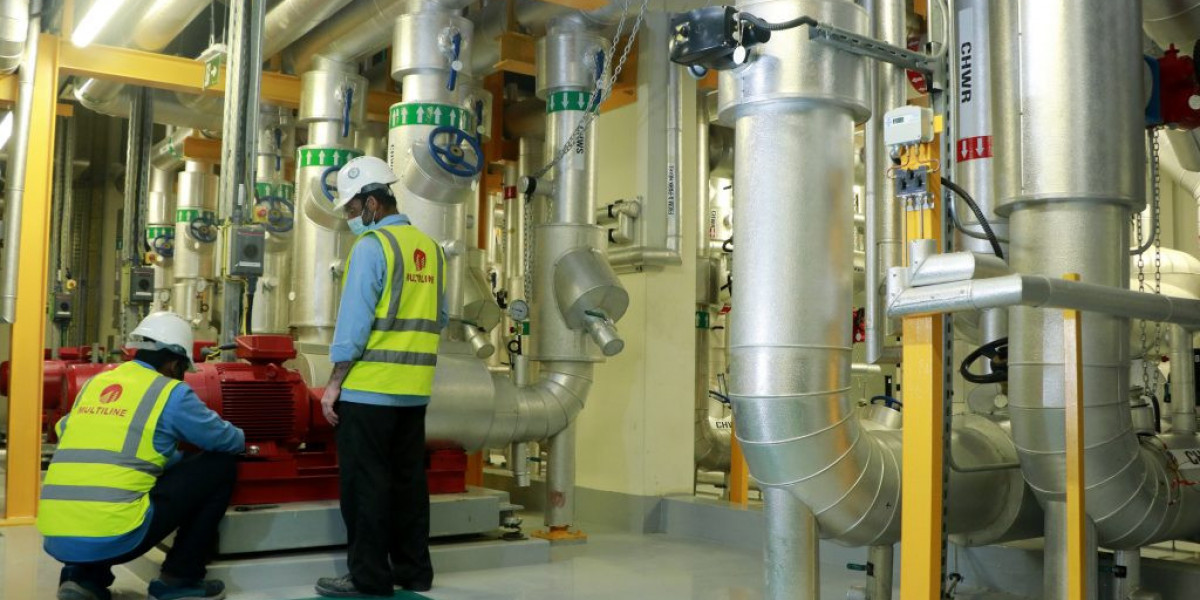Chilled water pump installation is a crucial step in setting up an efficient cooling system, but the work doesnt stop there. To ensure the system performs at its best, testing, adjusting, and balancing (TAB) is essential. TAB procedures fine-tune the entire chilled water system, optimizing its efficiency, reliability, and longevity. Neglecting this process can lead to uneven cooling, wasted energy, and costly repairs. This article delves into the significance of TAB and how it contributes to the optimal performance of chilled water systems.
1. What is Testing, Adjusting, and Balancing (TAB)?
TAB refers to a systematic process used to verify and fine-tune the performance of a chilled water system. Heres a breakdown of its components:
Testing: Measuring the system's operational parameters, such as flow rates, pressures, and temperatures, to identify discrepancies.
Adjusting: Making necessary modifications to ensure the system operates according to design specifications.
Balancing: Distributing water flow evenly across all components to maintain consistent performance throughout the system.
When executed properly, TAB ensures the system meets its intended design and operates efficiently under varying conditions.
2. Why is TAB Important for Chilled Water Systems?
Chilled water systems are complex and involve multiple components working together. Without proper TAB procedures, even a well-designed system may underperform. Below are the key reasons why TAB is critical:
2.1 Enhanced Energy Efficiency
A poorly balanced system forces pumps and other components to work harder, leading to excessive energy consumption. TAB ensures that water flow and pressure are optimized, reducing the overall energy usage and operating costs.
2.2 Improved Comfort and Performance
Uneven cooling can result in hot and cold spots within the building. TAB ensures that chilled water is distributed uniformly, providing consistent cooling and enhanced occupant comfort.
2.3 Extended Equipment Life
When pumps and other components are forced to operate under improper conditions, they experience additional wear and tear. TAB reduces unnecessary strain on equipment, prolonging its lifespan and reducing maintenance costs.
2.4 Compliance with Design Specifications
TAB verifies that the system performs according to the original design, ensuring compliance with codes and standards. This step is especially important in large-scale installations where deviations can have significant consequences.
3. The TAB Process for Chilled Water Systems
The TAB process involves several systematic steps to ensure the system operates at its peak performance:
3.1 Preliminary Inspection
Before beginning TAB, technicians conduct a thorough inspection of the chilled water system to identify any obvious issues, such as leaks, improper installations, or inadequate insulation.
3.2 System Testing
Technicians measure key parameters, including:
Water flow rates
Differential pressures
Pump operating conditions
This step provides a baseline for identifying inefficiencies or irregularities.
3.3 Adjustments
Based on the test results, changes are made to:
Control valves
Pump speeds
Flow regulators
These modifications ensure the system operates within its design parameters.
3.4 Balancing
The final step involves balancing the system to achieve uniform water distribution. Flow rates are adjusted across all branches and terminal units to ensure consistent cooling performance.
3.5 Documentation and Reporting
Technicians prepare detailed reports documenting the system's performance before and after TAB. These reports are used as a reference for future maintenance and troubleshooting.
4. Common Challenges During TAB
While TAB is essential, its not without challenges. Below are some common issues encountered during the process:
4.1 Inadequate System Design
Poorly designed systems can be difficult to balance, even with extensive adjustments. Addressing design flaws may require additional modifications or upgrades.
4.2 Lack of Access to Equipment
In some installations, access to key components, such as valves or measurement points, is limited, complicating the TAB process.
4.3 Debris in the System
Debris left during installation can obstruct flow and skew test results. Proper flushing of the system before TAB is crucial.
4.4 Improper Calibration of Instruments
Inaccurate measurements can lead to incorrect adjustments. Ensuring all instruments are calibrated is essential for reliable results.
5. Best Practices for Effective TAB
To achieve optimal results, its important to follow industry best practices during the TAB process:
5.1 Hire Qualified Professionals
TAB is a specialized process that requires expertise. Working with trained and certified technicians ensures accuracy and compliance with industry standards.
5.2 Use Advanced Equipment
Modern tools and instruments provide precise measurements, improving the accuracy and efficiency of the TAB process.
5.3 Regular Maintenance
Performing TAB as part of routine maintenance ensures the system continues to operate efficiently over time.
5.4 Maintain Accurate Records
Detailed documentation of the TAB process provides a valuable reference for future troubleshooting and performance assessments.
6. The Role of TAB in Chilled Water Pump Installation
While chilled water pump installation lays the foundation for an efficient cooling system, TAB ensures that the system reaches its full potential. A properly installed pump paired with a balanced system delivers consistent cooling, minimizes energy consumption, and extends equipment life. By prioritizing TAB, you can maximize the return on investment in your chilled water system.
Conclusion
Testing, adjusting, and balancing (TAB) is a vital step in ensuring the optimal performance of chilled water systems. From improving energy efficiency to enhancing comfort and extending equipment life, the benefits of TAB are undeniable. By addressing common challenges and following best practices, you can achieve a system that operates reliably and efficiently for years to come. Whether youre planning a new installation or optimizing an existing system, TAB is an essential process that should never be overlooked.







